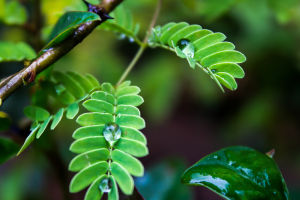Indoor Plant Care Essentials
We all know that indoor plants bring a touch of nature into our homes, making spaces feel fresh and vibrant. But, as beginners, the task of caring for these green companions might seem daunting.
Worry not! This article will guide you through everything you need to know about indoor plant care, from choosing the right plants to avoiding common mistakes.
Understanding the Basics of Indoor Plant Care
When it comes to indoor plant care, the basics are simple: provide the right light, water, soil, and the occasional TLC. The first thing we need to understand is that different plants have different needs. Some thrive in bright, direct sunlight, while others prefer a cozy spot with low light. This is where choosing the right plant for your space comes into play.
If you're just starting, we recommend plants that are easy to care for, such as the snake plant, pothos, or peace lily. These plants are forgiving and can tolerate occasional lapses in care, making them perfect for beginners.
Choosing the Right Plant for Your Home
When we start considering plants for our indoor space, the number one thing to focus on is the lighting in the room. Is it bright and sunny or more on the shaded side? If your home has plenty of natural light, you can opt for sun-loving plants like succulents, cacti, or citrus trees. On the other hand, if you're in a room with limited light, choose plants like the snake plant or zz plant, which thrive in low-light conditions.
Don't forget to think about the size of the plant, too. Some plants, like the monstera, can grow quite large, while others, like the spider plant, stay small and compact. We recommend you measure the space before choosing to avoid having a plant outgrow its spot.
Watering: A Delicate Balance
One of the most common mistakes beginners make is overwatering or underwatering plants. Every plant has its own watering needs, and getting the right balance is key to keeping your plant healthy.
As a rule of thumb, most indoor plants prefer to dry out a bit between waterings. To check if your plant needs water, simply stick your finger into the soil. If it feels dry an inch or two down, it's time to water. But if it's still moist, wait a few days before checking again. Be sure to avoid letting water sit in the pot's drainage tray, as this can lead to root rot.
Soil and Containers: Choosing the Right Home
Choosing the right soil and container for your plants is essential for their well-being. Most indoor plants prefer well-draining soil that allows water to pass through without pooling. You can buy general-purpose potting soil or specialized mixes depending on the type of plant you have (e.g., cactus mix for succulents or orchid mix for orchids).
As for containers, make sure your pot has drainage holes at the bottom. This is vital to prevent water from accumulating and potentially causing root rot. Choose a container that's just slightly larger than the plant's root ball. Too large a pot can lead to waterlogged soil, and too small a pot can stunt the plant's growth.
Light Requirements: More Than Just Sunlight
It's no surprise that plants need light to survive, but did you know that the amount of light a plant gets can affect how well it grows? Not all light is created equal. Direct sunlight can be harsh on certain plants, while others thrive under its intensity.
For most indoor plants, bright indirect light is ideal. This can be achieved by placing them near windows with sheer curtains or in rooms that get lots of natural light. If you're working with a low-light environment, consider investing in grow lights, which can mimic natural sunlight for plants that need it.
Common Mistakes to Avoid
Now that we've covered the basics, let's look at some common mistakes beginners tend to make.
1. Overwatering: As mentioned, too much water is a plant killer. Overwatering can drown the roots and promote mold growth. Make sure you check the soil's moisture level before watering.
2. Not Using Proper Drainage: Always ensure that the pots have drainage holes. Without them, excess water has nowhere to escape, leading to root rot.
3. Ignoring Pest Control: Plants can fall prey to pests like aphids, spider mites, or mealybugs. Regularly inspect your plants for pests, and treat them with gentle, natural methods like neem oil if necessary.
4. Choosing the Wrong Plant for the Space: Not all plants are suited for every environment. Always match your plant choice with the room's lighting and humidity levels to give it the best chance to thrive.
5. Neglecting to Fertilize: Indoor plants need nutrients to grow, so be sure to use a balanced, water-soluble fertilizer every month during the growing season. Don't overdo it, though – too much fertilizer can harm the plant.
Maintaining Your Plants Over Time
As your indoor plants grow and mature, they may require repotting, pruning, or special care during the seasons. For example, some plants, like the spider plant, produce "babies" that can be propagated into new plants. We also recommend regularly dusting the leaves to ensure the plant can photosynthesize efficiently.
During the winter months, many indoor plants go into a dormant phase and may need less water. Adjust your care routine according to the season to keep your plants happy year-round.
Conclusion: Happy Plants, Happy Home
Caring for indoor plants is not only rewarding, but also a way to add life and beauty to your home. By choosing the right plants, providing proper care, and avoiding common mistakes, you'll soon see your indoor garden thrive. Remember, patience is key. With time, you'll become more confident in your plant care skills, and your green companions will flourish.
We hope this guide helps you get started on your indoor plant journey. So, what plants will you be adding to your space? Don't hesitate to share your experience with us in the comments!
-
 Shy Plant WonderExplore the fascinating world of Mimosa pudica and how its "shy" nature captures our imagination!
Shy Plant WonderExplore the fascinating world of Mimosa pudica and how its "shy" nature captures our imagination! -
 Coconut Ocean JourneyHow Do Coconuts Travel Across Oceans Without Sinking or Getting Spoiled? It’s a Natural Survival Superpower!
Coconut Ocean JourneyHow Do Coconuts Travel Across Oceans Without Sinking or Getting Spoiled? It’s a Natural Survival Superpower! -
 Shy Plant WonderExplore the fascinating world of Mimosa pudica and how its "shy" nature captures our imagination!
Shy Plant WonderExplore the fascinating world of Mimosa pudica and how its "shy" nature captures our imagination!
Contact to : xyjph123@gmail.com
Privacy Agreement
Copyright © boyuanhulian 2020 - 2022. All Right Reserved.
Privacy Agreement
Copyright © boyuanhulian 2020 - 2022. All Right Reserved.